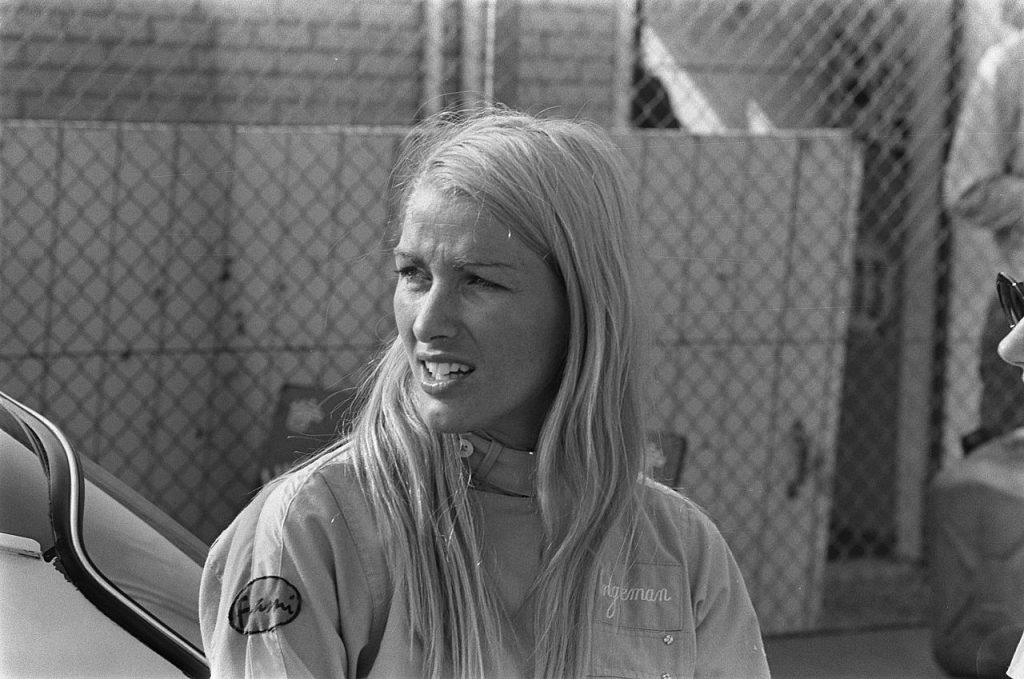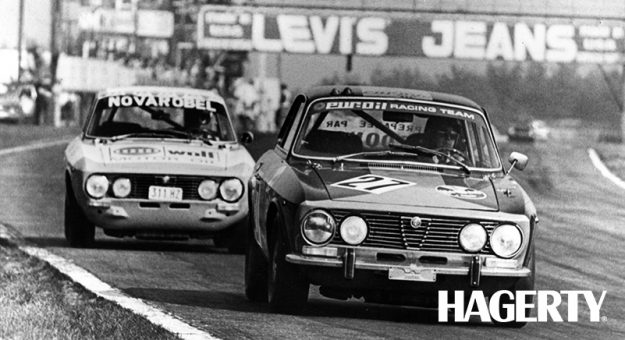By Grace Houghton / Hagerty.com
The first woman to drive in Formula 1 may have raced for Maserati, but Alfa Romeo’s 20th-century driver lineup includes Hellè Nice, one of motorsports’ most colorful female characters, and Tatiana Calderon, the first Latin American women to appear on an F1 grid. A litany of women tackled events from Formula 1 to hillclimbs to endurance racing under the marque’s flag, but I’m particularly struck by the stories of two characters who raced in the ’60s and ’70s: Christine Beckers and Liane Engeman.

No branch of motorsports was too gnarly for Beckers, who cut her teeth rallying an NSU Prinz in France and Belgium before adding endurance circuit racing to her schedule. Alongside Marie-Claude Beaumont, Beckers became one of the first women to finish the Spa 24 Hours. Beaumont and Beckers’ 24th-overall finish caught the eye of Alfa Romeo, and in 1968, at the age of 25, Beckers accepted a works contract with the Italian manufacturer.

Beckers continued to balance rallying with circuit racing, winning the d’Houyet hillclimb in Belgium and the Benelux Cup at Zandvoort. Though she still rallied with her NSU, she also competed in Alfa’s 1750 Berlina, Giulia GTA, and Giulia GTV. In the late ’60s, Beckers also wrangled a singularly rare beast in Group 5: the Giulia GTV-SA, into which Alfa had stuffed an insane version of its 1600-cc GTA engine. The mill made 250 horsepower at 7500 rpm, thanks to twin superchargers spun not by the crankshaft but by a hydraulic pump. Information about the 10 GTV-SA cars made remains scant today; rumor has it Alfa converted them back to naturally-aspirated spec.
In 1971, Beckers returned to the Spa 24 Hours, sharing seat time with Dutch driver Liane Engeman. Though their Alpina-campaigned BMW 2800 CS retired due to engine failure, Beckers remained undaunted. She appeared multiple times at Le Mans racing Chevrons (a B21 and its successor, the B23), refusing to be turned away by mechanical failures and doggedly returning each year. In ’74, her patience was rewarded: Alongside Marie Laurent and Yvette Fontaine, Beckers won the 2000-cc class of the 24 Hours of Le Mans.

Her appetite for adventure was only whetted by these achievements; Beckers went on to tackle the Paris-Dakar Rally (multiple times) and even made an appearance at Daytona in a NASCAR race.
Becker’s one-time teammate, Liane Engeman, pursued a less eclectic mix of events but had an unusual entry into the sport. One day, 15-year-old Engeman, who drove taxis for her father’s company, met rally driver Rob Slotemaker at a Netherlands bus stop. After this serendipitous meeting, Engeman followed the professional driver to Zandvoort, where she bought a race-prepped Mini Cooper. Four years later, she began racing in the 1200-cc class in Formula Vee.

Possibly finding the Netherlands motorsports atmosphere less than thrilling, Engeman traveled to the UK in 1966 and joined Alan Mann Racing, competing in Minis and Hillman Imps in the BSCC (British Saloon Car Championship). Along with Formula Vee, Engeman explored Formula 3 and the European Touring Car Championship. In the latter, she typically raced Alfa Romeos, though she never held a factory contract like Beckers did. Engeman also co-drove a Matra Djet 5S with Janet Guthrie at the 12 Hours of Sebring in ’67, and returned with Guthrie to Sebring in ’69 to campaign an Austin-Healey Sprint with Donna Mae Mims.

She transitioned back to the Netherlands in the ’70s, spending most of her time racing Fords, following a stint with Autodelta and its Alfa GTAm. The stay in her home country didn’t prevent Endeman from turning the wheel in touring cars (mostly Alfas and Fords) at legendary European circuits like Monza and Hockenheim—and even participating in the infamous Targa Florio in Sicily. However, in 1973, she scratched for the Spa 24 Hours; she and carpet-chain owner Piet Hein Keijzer were expecting a child. She would subsequently retire from motorsports to raise a family.

They may have overlapped only briefly at Alfa Romeo, and few may know their names today, but Christine Beckers and Liane Engeman are inspirational reminders of women who pursued the sport they loved, even when circumstances did not favor them. Their stories serve as a reminder that you don’t have to be an F1 world champion to help forge a path for women in motorsports—win or lose, you just keep showing up to the race track, helmet in hand.
Enjoying this article? Sign up for Hagerty’s newsletters to see more like it.






